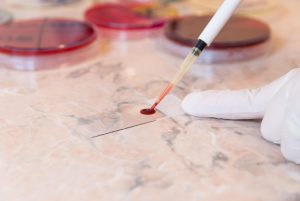
The future of wearable health and fitness tech is nigh — and in many ways, it’s already here. Of course, if you want to be technical about this, every second that you don’t die is a step into the future (those passing seconds constantly adding up, creating the days and years that make up your life). The workings of time and space not withstanding, the number — and power — of wearable health devices (more than simple fitness trackers) is set to explode, transforming our lives and how we think about our collective health. Here are four examples to give you an idea of where we’re headed.
Google’s Smart Contact Lenses
Google (partnered with Alcon, a division of Swiss healthcare company Novartis) is developing smart contact lenses, which could potentially transform not only how you literally see the world, but also how you monitor glucose levels (for diabetics), or track the progression of degenerative diseases like glaucoma.
The lenses, described by Google as an “eye-mountable device,” will utilize chip miniaturization and sensor apparatus to measure glucose in tears, thus saving diabetics time and energy in how they keep track of their health. And as this wearable tech advances, Google Glass innovations, like itty-bitty cameras, might eventually work their way into the lenses. Let’s hope Google (as well as Samsung and others working on similar concepts) can get this project off the ground.
Intelligent Pain Relief
Everyone from distance runners and the clerks helping you at the checkout aisles in the grocery store, to your family sitting round the dinner table during the holidays, complains about knee problems. The human knee has some evolutionary faults (limited rotation) when it comes to how we actually stand and walk (all that weight on two legs) these days, and the kinds of sports we play. Perhaps an intelligent wearable band, like the one being developed by Quell (worn just below the knee), which uses Bluetooth and an app to monitor your pain levels and sleep patterns and then delivers “customized” chronic pain relief through electrodes embed in the device, is the solution we need.
And since Americans consume the majority of the planet’s pain pills, devices like these could help wean us of off our overdependence on prescription pain meds, which would be a very good thing indeed.
Power-Generating Smart Shoes
Power-generating smart shoes? You know you’ll scoop up a pair of these babies when they hit the market. “Shock-harvesting” and “swing-harvesting” tiny generators (developed in Germany) implanted in shoes will soon be able to generate a charge, and thus power sensors that can map the path you choose, and monitor your speed — without obliging you to plug in your shoes at night to charge them up, as the foot-powered battery should always be revving to go.
Digital Smart Shirts
Dressing smartly is a good idea, although usage of the word “smartly” could soon change, and simply mean putting on a digital shirt. Products like the Heddoko Smartshirt, with censors that capture the movements of a wearer’s body, will model a person’s motion in 3D on a smart device, and then coach people on how to improve their movement and workout or running techniques.
If brand names are important to you, the moisture-wicking Ralph Lauren Polo Tech Shirt, featuring bio-monitoring “silver fibers” interwoven into the shirt, can send biometric data (calories burnt, steps taken, etc.) straight to your phone or tablet. That makes it a fashionable choice, and a very good digital clothing buy. Before long our clothes will be talking to us, and keeping us company in this big and lonely world.

























